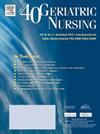运动意象与动作观察对老年人下肢功能的影响:系统回顾与荟萃分析
IF 2.5
3区 医学
Q3 GERIATRICS & GERONTOLOGY
引用次数: 0
摘要
目的下肢功能衰退是影响老年人身体健康的主要因素之一。本研究旨在通过系统回顾和荟萃分析,比较运动想象(MI)和动作观察(AO)对老年人下肢功能的影响。方法计算机检索PubMed、Web of Science和Cochrane Library数据库。两名研究者根据纳入标准独立筛选文献,进行风险评估,系统评价后使用Revman 5.4软件进行数据分析。结果纳入14项随机对照试验,涉及475名老年人。meta分析结果显示,在Timed Up and Go检验中,心肌梗死干预并未显著改善步行时间(WMD = -1.93, 95% CI= -4.47, 0.61, P = 0.14),且存在异质性。相比之下,AO干预显著减少了步行时间(WMD = -0.76, 95% CI= -1.45, -0.07, P = 0.03),异质性较低。此外,心肌梗死和AO干预均未显著改善Berg平衡量表或10米步行测试分数。心肌梗死干预也没有提高瀑布疗效量表得分,由于研究较少,故对AO干预进行描述性分析。总的来说,心肌梗死和AO干预对改善老年人下肢功能都有积极作用,但与心肌梗死相比,AO似乎在增强老年人下肢运动功能方面更有效。本文章由计算机程序翻译,如有差异,请以英文原文为准。
Comparison of motor imagery and action observation on lower limb function in older adults: a systematic review and meta-analysis
Objective
Lower limb functional decline is one of the main factors threatening the physical health of older adults. This study aims to compare the effects of motor imagery (MI) and action observation (AO) on lower limb function in older adults through a systematic review and meta-analysis.
Methods
A computer search was conducted in the PubMed, Web of Science, and Cochrane Library databases. Two researchers independently screened the literature according to inclusion criteria, conducted risk assessments, and performed data analysis using Revman 5.4 software after the systematic review.
Results
Fourteen randomized controlled trials involving 475 older adults were included. The meta-analysis results showed that, in the Timed Up and Go test, MI intervention did not significantly improve walking time (WMD = -1.93, 95 % CI= -4.47, 0.61, P = 0.14), and there was heterogeneity. In contrast, AO intervention significantly reduced walking time (WMD = -0.76, 95 % CI= -1.45, -0.07, P = 0.03) with low heterogeneity. Additionally, neither MI nor AO interventions significantly improved the Berg Balance Scale or 10-meter walking test scores. MI intervention also did not improve the Falls Efficacy Scale scores, and due to the small number of studies, AO intervention was analyzed descriptively.
Conclusion
Overall, both MI and AO interventions have a positive effect on improving lower limb function in older adults, but compared to MI, AO appears to be more effective in enhancing lower limb motor function in this population.
求助全文
通过发布文献求助,成功后即可免费获取论文全文。
去求助
来源期刊

Geriatric Nursing
医学-护理
CiteScore
3.80
自引率
7.40%
发文量
257
审稿时长
>12 weeks
期刊介绍:
Geriatric Nursing is a comprehensive source for clinical information and management advice relating to the care of older adults. The journal''s peer-reviewed articles report the latest developments in the management of acute and chronic disorders and provide practical advice on care of older adults across the long term continuum. Geriatric Nursing addresses current issues related to drugs, advance directives, staff development and management, legal issues, client and caregiver education, infection control, and other topics. The journal is written specifically for nurses and nurse practitioners who work with older adults in any care setting.
 求助内容:
求助内容: 应助结果提醒方式:
应助结果提醒方式:


